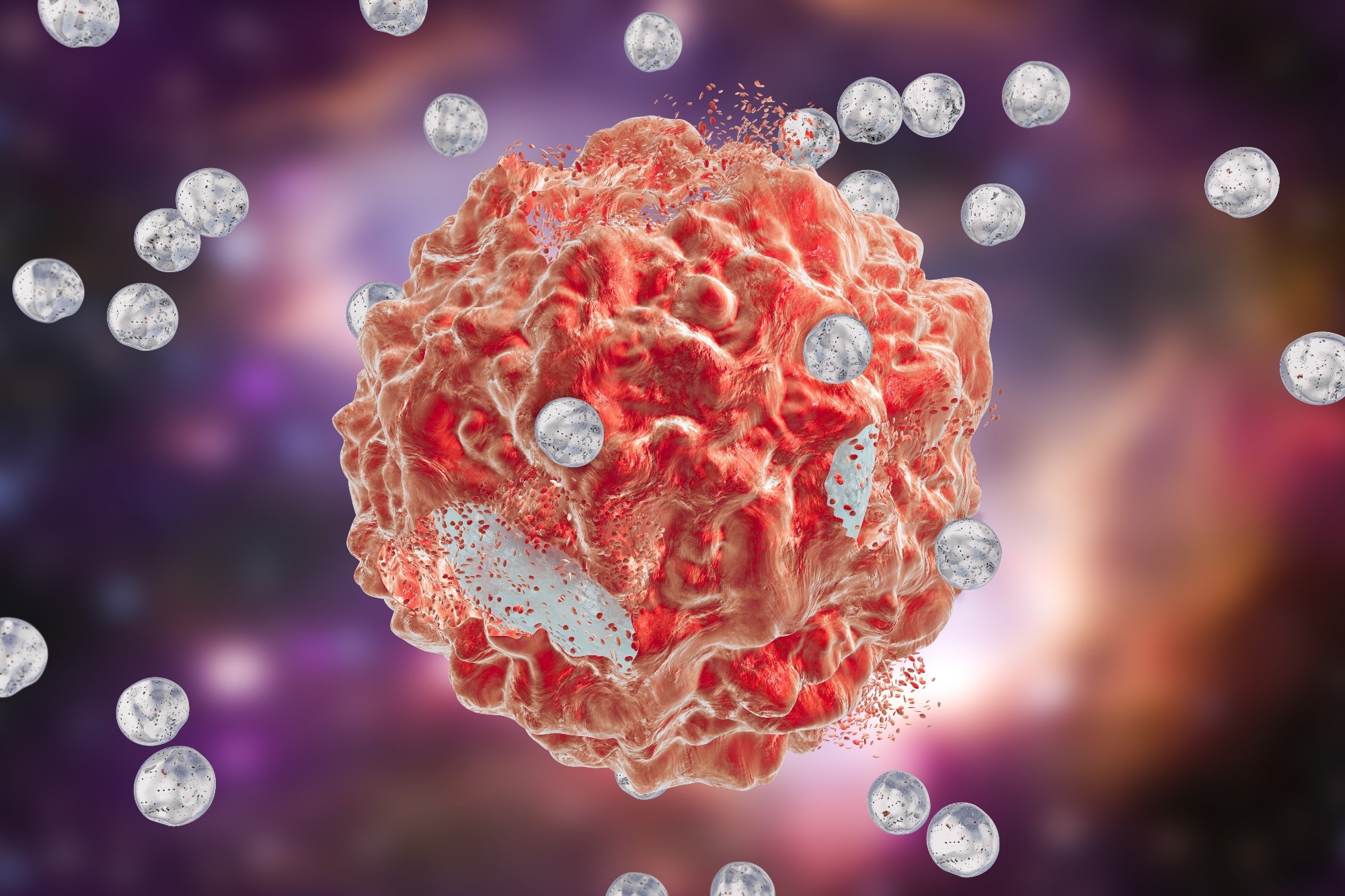In a recent study published in Scientific Reports, a group of researchers investigated the efficacy of a novel intra-tumoral drug delivery carrier in treating oral squamous cell carcinoma (OSCC), to enhance targeted therapy and minimize systemic side effects.
 Study: A novel intra-tumoral drug delivery carrier for treatment of oral squamous cell carcinoma. Image Credit: Kateryna Kon/Shutterstock.com
Study: A novel intra-tumoral drug delivery carrier for treatment of oral squamous cell carcinoma. Image Credit: Kateryna Kon/Shutterstock.com
Background
Medical advances have waged a prolonged war against cancer, but its devastating impact on lives persists. Aggressive chemotherapies, though improving, still inflict drastic side effects on patients.
Targeted drug delivery is essential to maximize treatment efficacy and minimize adverse effects, and nanotechnology offers promising solutions for targeting the tumor through nanoparticles (NPs) loaded with medication, reducing systemic toxicity.
NPs improve drug distribution, stability, and efficacy, specifically targeting tumor tissues. Intra-lesional drug delivery restricts exposure to the lesion site, lessening systemic effects. Food and Drug Administration (FDA)-approved polymeric NPs, like polyethylene glycol (PEG)-coated ones, show enhanced stability and sustained drug release. Tumor-targeted polyethylene glycol-polylactide (PEG-PLA) NPs with specific therapies demonstrated improved efficacy and smaller tumor sizes in a mouse model of OSCC.
About the study
In the present study, 48 white mice were used to examine changes on the tongue's dorsum surface after treatment. The mice were inspected daily and weighed weekly under anesthesia. The study followed Animal Research: Reporting of In Vivo Experiments (ARRIVE) guidelines and received ethical approval from Mansoura University.
The mice were chemically induced with OSCC using a water-soluble carcinogen, 4-nitroquinoline 1-oxide (4-NQO). The tongue was brushed with the 4-NQO solution daily for nine months. Biopsies were taken at various stages for histopathological evaluation. All mice developed OSCC, with varying degrees of dysplasia and carcinoma.
A drug carrier was prepared using acyl halide-terminated PLA (PLA-diCOCl) prepolymer and PEG. Additionally, the copolymer was characterized using Fourier transform infrared spectroscopy (FTIR). Drug-free nano-micelles were produced from the copolymer and examined using scanning electron microscopy (SEM).
The drug-loaded NPs were fabricated using the water-in-oil-in-water (W/O/W) solvent evaporation method. The drug release profile was determined by shaking the NPs with deionized water and measuring the released drug amount using an ultraviolet-visible spectrometer.
After 36 weeks, all biopsies showed varying degrees of dysplasia and carcinoma. Treatments were administered via injection of loaded nano-micelles. Half of the mice received systemic intravenous administration of cisplatin, cetuximab, and 5-fluorouracil (5-FU)-loaded micelles, while the other half received intralesional injections.
Post-treatment biopsies were taken and compared with pre-treatment biopsies. The control group showed a mix of normal tissue, carcinoma in-situ, dysplasia, and necrosis. The test group showed 50% normal tissue and 50% necrosis. Data analysis was performed using computer software, with Chi-Square and Fischer exact tests used for comparison.
Study results
The present study showed an in-depth FTIR analysis of PLA prepolymer, which revealed specific wavebands corresponding to different molecular vibrations. The stretching vibration of O-H in -COOH end groups was recognized at 3499 cm−1, while the C-H stretching vibration of –CH– and –CH3 groups was observed at 2455 and 2957 cm−1. A sharp peak at 1713 cm−1 was attributed to the stretching vibration of the ester carbonyl group.
Further, the FTIR spectra of the polyethylene glycol-polylactide-polyethylene glycol (PEG-PLA-PEG) triblock copolymer displayed all absorbing bands of PEG and PLA prepolymer, indicating the presence of both components in the copolymer.
The PEG prepolymer's FTIR analysis showed a band at 3448 cm−1, characteristic of the stretching vibration of O-H in –COOH end groups, and bands at 2855 cm−1 due to the stretching vibration of C-H of –CH3 in –CH– groups. A sharp peak at 1112 cm−1 was assigned to the stretching vibration of the –C–O–C– group.
SEM imaging results of triblock copolymer micelles showed a regular spherical structure with smooth surfaces, varying in size and constructed from small copolymer clusters. The average size of the particles ranged from 60–201 nm. The drug release profiles of cetuximab, 5-FU, and cisplatin showed different phases of release.
Histopathological evaluation of Hematoxylin & Eosin punch biopsies showed the development of epithelial dysplasia and carcinoma in-situ over time. Systemic administration NPs reduced the degree of dysplasia and malignancy, while intra-tumoral application of NPs resulted in significantly better results by eliminating invasive elements and restoring the epithelium to its normal condition.
Discussion
The results of the present study suggested that nanotechnology-based carriers in the form of polymeric nano-micelles offer promising solutions for the challenges currently faced in cancer treatment. These tiny carriers can deliver chemotherapeutic agents directly to cancer cells, minimizing nonselective damage caused by conventional therapies.
The use of PLA degradable-based polymers, especially when copolymerized with hydrophilic and bio-inert polymers like PEG, enhances targeted drug delivery. The PEG–PLA–PEG tri-block copolymer shows favorable properties for drug delivery, including biocompatibility and controlled release.
These nano-micelles exhibit efficient cancer cell penetration, reducing the need for high systemic drug doses and lowering non-cancerous tissue toxicity. Animal studies have demonstrated significant anticancer effects with reduced side effects compared to conventional drug delivery methods.